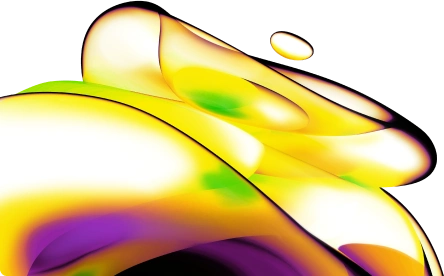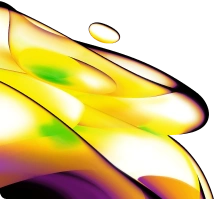

AlphaLISA SureFire Ultra Human Phospho-MERTK (Tyr749) Detection Kit, 500 Assay Points
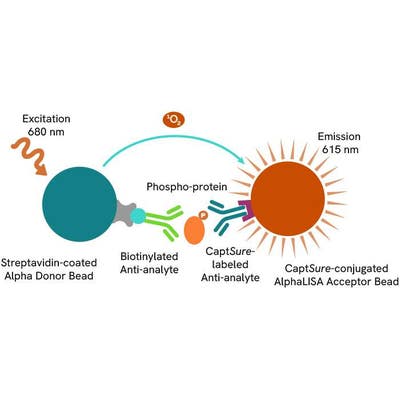

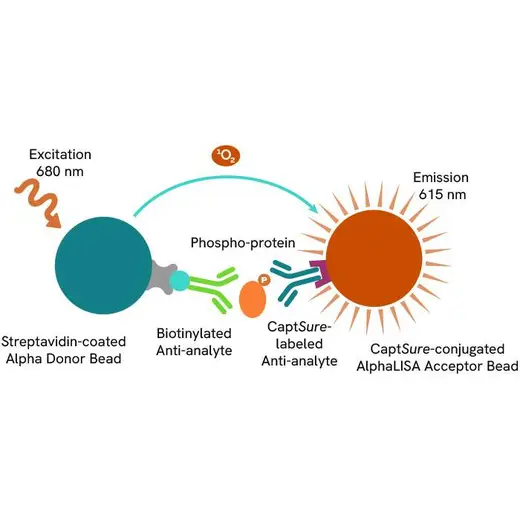


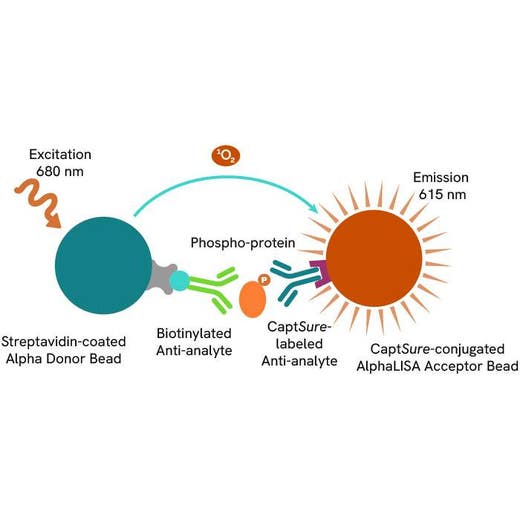


| Feature | Specification |
|---|---|
| Application | Cell Signaling |
| Protocol Time | 2h at RT |









Product information
Overview
Mer receptor tyrosine kinase (MERTK) is a member of the TAM receptor family, playing a pivotal role in inflammatory responses, phagocytosis, and the clearance of apoptotic debris. Upon binding ligands such as Gas6 and protein S, MERTK undergoes dimerization and autophosphorylation, activating downstream pathways like PI3K/AKT and MAPK. Overexpression of MERTK is implicated in cancers, including leukemia and melanoma, while its modulation has therapeutic potential in autoimmune conditions.
The AlphaLISA SureFire Ultra Human Phospho-MERTK (Tyr749) Detection Kit is a sandwich immunoassay for the quantitative detection of phospho-MERTK in cellular lysates, using Alpha Technology.
Formats:
- The HV (high volume) kit contains reagents to run 100 wells in 96-well format, using a 60 μL reaction volume.
- The 500-point kit contains enough reagents to run 500 wells in 384-well format, using a 20 μL reaction volume.
- The 10,000-point kit contains enough reagents to run 10,000 wells in 384-well format, using a 20 μL reaction volume.
- The 50,000-point kit contains enough reagents to run 50,000 wells in 384-well format, using a 20 μL reaction volume.
AlphaLISA SureFire Ultra kits are compatible with:
- Cell and tissue lysates
- Antibody modulators
- Biotherapeutic antibodies
AlphaLISA SureFire Ultra kits can be used for:
- Cellular kinase assays
- Receptor activation studies
- High-throughput screening for preclinical studies
How it works
Phospho-AlphaLISA SureFire Ultra assay principle
The Phospho-AlphaLISA SureFire Ultra assay measures a protein target when phosphorylated at a specific residue.
The assay uses two antibodies which recognize the phospho epitope and a distal epitope on the targeted protein. AlphaLISA assays require two bead types: Acceptor and Donor beads. Acceptor beads are coated with a proprietary CaptSure™ agent to specifically immobilize the assay specific antibody, labeled with a CaptSure tag. Donor beads are coated with streptavidin to capture one of the detection antibodies, which is biotinylated. In the presence of phosphorylated protein, the two antibodies bring the Donor and Acceptor beads in close proximity whereby the singlet oxygen transfers energy to excite the Acceptor bead, allowing the generation of a luminescent Alpha signal. The amount of light emission is directly proportional to the quantity of phosphoprotein present in the sample.

Phospho-AlphaLISA SureFire Ultra two-plate assay protocol
The two-plate protocol involves culturing and treating the cells in a 96-well plate before lysis, then transferring lysates into a 384-well OptiPlate™ plate before the addition of Phospho-AlphaLISA SureFire Ultra detection reagents. This protocol permits the cells viability and confluence to be monitored. In addition, lysates from a single well can be used to measure multiple targets.
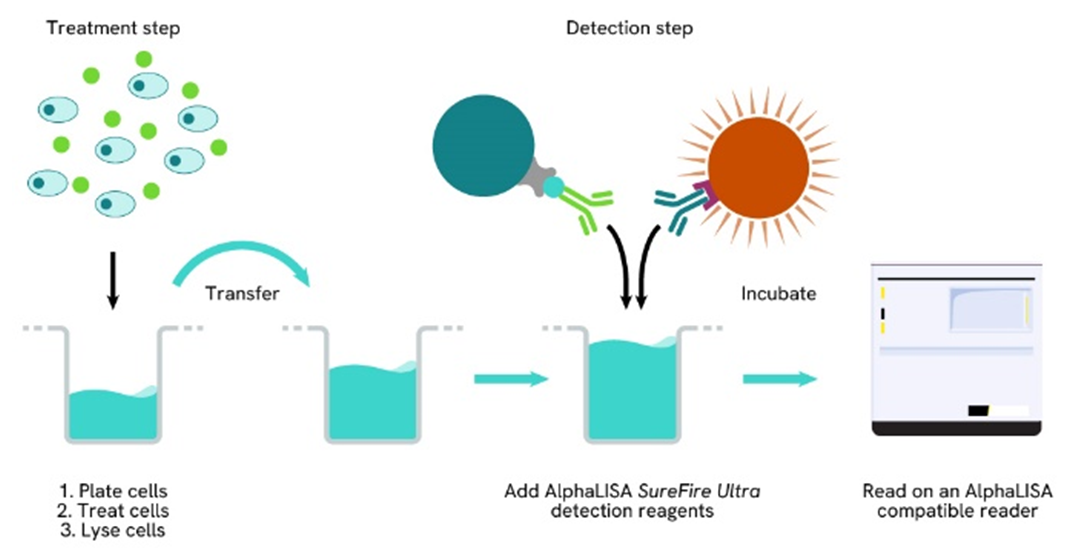
Phospho-AlphaLISA SureFire Ultra one-plate assay protocol
Detection of Phosphorylated target protein with AlphaLISA SureFire Ultra reagents can be performed in a single plate used for culturing, treatment, and lysis. No washing steps are required. This HTS designed protocol allows for miniaturization while maintaining AlphaLISA SureFire Ultra quality.
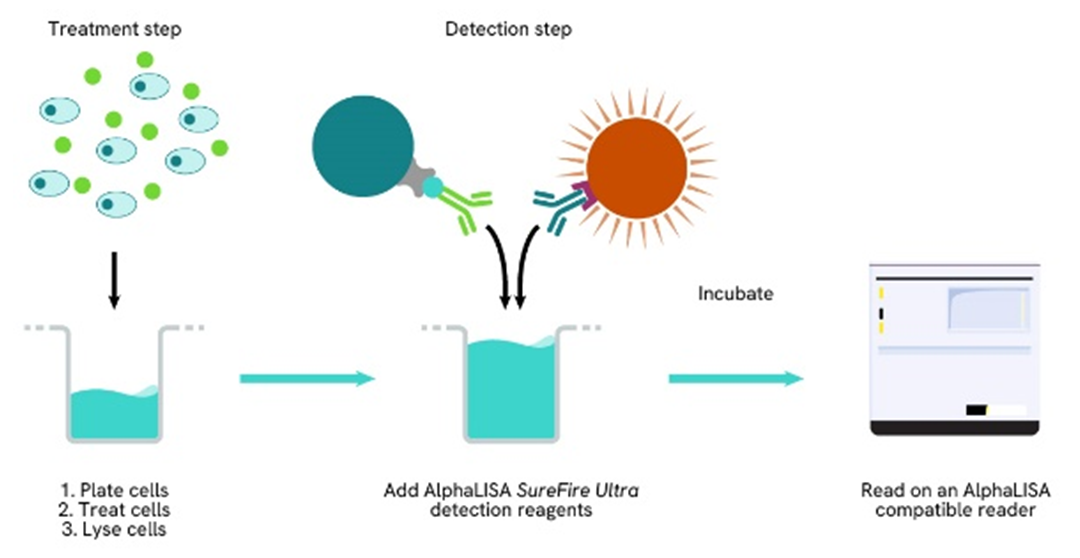
Assay validation
Activation of MERTK Phospho (Tyr749) in cells treated with Gas6 protein
PANC-1 cells were seeded in a 96-well plate (40,000 cells/well) in complete medium, and incubated overnight at 37°C, 5% CO2. The cells were treated with increasing concentrations of Gas6 protein for 15 minutes.
After treatment, the cells were lysed with 100 µL of Lysis Buffer for 10 minutes at RT with shaking (350 rpm). MERTK Phospho (Tyr749) and Total levels were evaluated using respective AlphaLISA SureFire Ultra assays. For the detection step, 10 µL of cell lysate (approximately 4,000 cells) were transferred into a 384-well white OptiPlate, followed by 5 µL of Acceptor mix and incubated for 1 hour at RT. Finally, 5 µL of Donor mix was then added to each well and incubated for 1 hour at RT in the dark. The plate was read on an Envision using standard AlphaLISA settings.
As expected, the Gas6 protein triggered a dose-dependent increase in levels of Phospho (Tyr749) while MERTK Total remained unchanged.

Activation of MERTK Phospho (Tyr749) in primary macrophages
PBMCs were isolated from healthy donors and cultured for 6 days in complete DMEM containing 20 ng/mL M-CSF to differentiated them into macrophages. Macrophages were seeded in a 96-well plate (30,000 cells/well) in complete DMEM, and incubated overnight at 37°C, 5% CO2. The cells were then treated with 200 nM MERTK Agonist Antibody for 15 minutes.
After treatment, the cells were lysed with 100 µL of lysis buffer for 10 minutes at RT with shaking (350 rpm). MERTK Phospho (Tyr749) and Total levels were evaluated using AlphaLISA SureFire Ultra assays. For the detection step, 10 µL of cell lysate (approximately 3,000 cells) was transferred into a 384-well white OptiPlate, followed by 5 µL of Acceptor mix and incubated for 1 hour at RT. Finally, 5 µL of Donor mix was then added to each well and incubated for 1 hour at RT in the dark. The plate was read on an Envision using standard AlphaLISA settings.
As expected, the Agonist Antibody increased MERTK (Tyr749) phosphorylation levels by approximately 26-fold. Total protein levels decreased approximately 2-fold, most likely due to Agonist Antibody induced internalization of MERTK.

Activation of Phospho (Tyr749) in endogenous cellular models treated with MERTK Agonist Antibody
PANC-1 cells were seeded in a 96-well plate (40,000 cells/well) in complete medium, and incubated overnight at 37°C, 5% CO2. The cells were left untreated or treated with 200 nM MERTK Agonist Antibody for 15 minutes.
After treatment, the cells were lysed with 100 µL of Lysis Buffer for 10 minutes at RT with shaking (350 rpm). MERTK Phospho (Tyr749) and Total levels were evaluated using respective AlphaLISA SureFire Ultra assays. For the detection step, 10 µL of cell lysate (approximately 4,000 cells) were transferred into a 384-well white OptiPlate, followed by 5 µL of Acceptor mix and incubated for 1 hour at RT. Finally, 5 µL of Donor mix was then added to each well and incubated for 1 hour at RT in the dark. The plate was read on an Envision using standard AlphaLISA settings.
As expected, the Agonist Antibody increased MERTK (Tyr749) phosphorylation levels by approximately 24-fold. Total protein levels decreased approximately 2-fold, most likely due to Agonist Antibody induced internalization of MERTK.
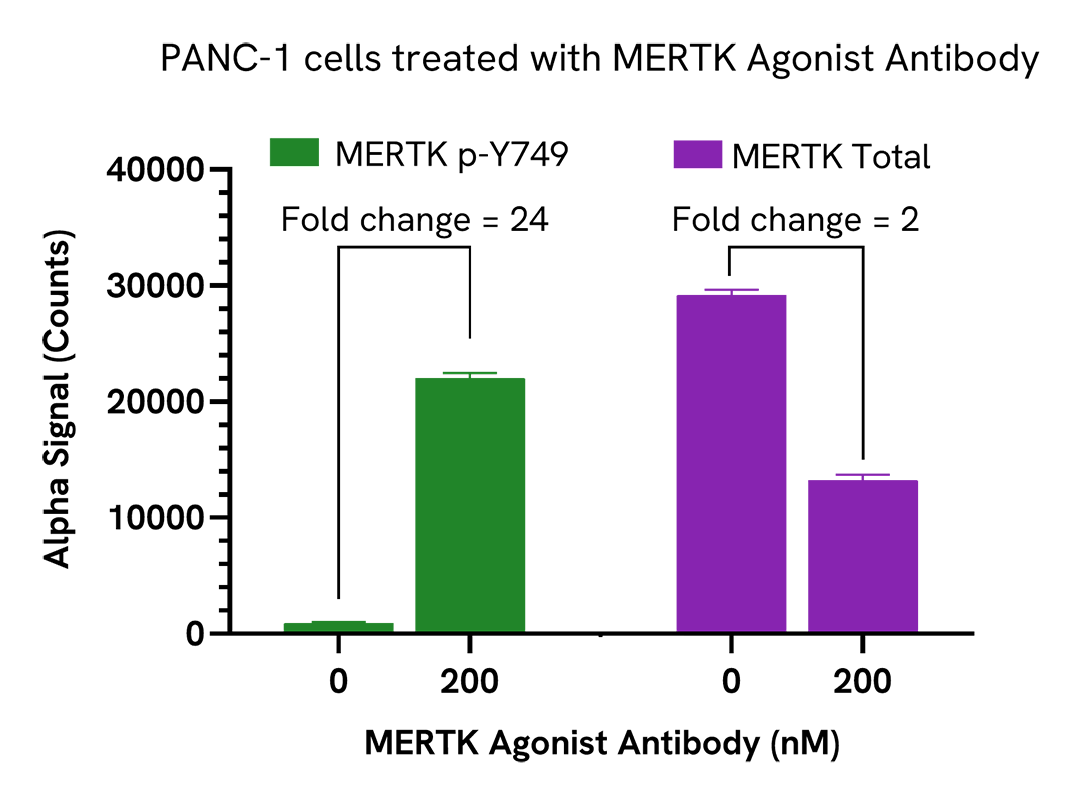
THP-1 cells were seeded in a 96-well plate (100,000 cells/well) in complete medium containing 100 nM PMA, and incubated for 24 hours at 37°C, 5% CO2. The cells were starved in serum free medium for 24 hours then left untreated or treated with 200 nM MERTK Agonist Antibody for 15 minutes.
After treatment, the cells were washed with HBSS and lysed with 100 µL of Lysis Buffer for 10 minutes at RT with shaking (350 rpm). MERTK Phospho (Tyr749) and Total levels were evaluated using respective AlphaLISA SureFire Ultra assays. For the detection step, 10 µL of cell lysate (approximately 10,000 cells) were transferred into a 384-well white OptiPlate, followed by 5 µL of Acceptor mix and incubated for 1 hour at RT. Finally, 5 µL of Donor mix was then added to each well and incubated for 1 hour at RT in the dark. The plate was read on an Envision using standard AlphaLISA settings.
As expected, the Agonist Antibody increased MERTK (Tyr749) phosphorylation levels by approximately 132-fold. Total protein levels decreased approximately 2-fold, most likely due to Agonist Antibody induced internalization of MERTK.

Inhibition of MERTK Tyr749 phosphorylation upon treatment with UNIC1062 inhibitor
Hep G2 cells were seeded in a 96-well plate (50,000 cells/well) in complete medium, and incubated overnight at 37°C, 5% CO2. The cells were pretreated with 100 µM Pervanadate for 15 minutes, then cells were left untreated or treated with 5 µM UNC1062 (MERTK-selective tyrosine kinase inhibitor) for 1 hour.
After treatment, the cells were lysed with 100 µL of Lysis Buffer for 10 minutes at RT with shaking (350 rpm). MERTK Phospho (Tyr749) and Total levels were evaluated using respective AlphaLISA SureFire Ultra assays. For the detection step, 10 µL of cell lysate (approximately 5,000 cells) was transferred into a 384-well white OptiPlate, followed by 5 µL of Acceptor mix and incubated for 1 hour at RT. Finally, 5 µL of Donor mix was then added to each well and incubated for 1 hour at RT in the dark. The plate was read on an Envision using standard AlphaLISA settings.
As expected, UNC1062 inhibited pervanadate-induced MERTK Tyr749 phosphorylation while Total levels remained unchanged.

Knockout validation of MERTK Phospho (Tyr749) assay
MERTK Phospho (Tyr749) levels were assessed in Wild Type (WT) and MERTK knockout (KO) A549 cells. MERTK KO cells (Abcam ab301074) and WT A549 cells were seeded in a T75 flask (6 x 106 cells/flask) in complete medium, and incubated overnight at 37°C, 5% CO2. The cells were treated with 100 µM Pervanadate for 30 minutes.
After treatment, the cells were lysed with 2 mL of Lysis Buffer for 10 minutes at RT with shaking (350 rpm). The cell lysate was serially diluted with Lysis Buffer and MERTK Phospho (Tyr749) levels were then evaluated by AlphaLISA SureFire Ultra. For the detection step, 10 µL of cell lysate was transferred into a 384-well white OptiPlate, followed by 5 µL of Acceptor mix and incubated for 1 hour at RT. Finally, 5 µL of Donor mix was then added to each well and incubated for 1 hour at RT in the dark. The plate was read on an Envision using standard AlphaLISA settings.
As expected, MERTK Phospho (Tyr749) was detected in the pervanadate treated WT cells but not in the MERTK-KO cell line.

Specifications
| Application |
Cell Signaling
|
|---|---|
| Automation Compatible |
Yes
|
| Brand |
AlphaLISA SureFire Ultra
|
| Detection Modality |
Alpha
|
| Product Group |
Kit
|
| Protocol Time |
2h at RT
|
| Shipping Conditions |
Shipped in Blue Ice
|
| Target |
MERTK
|
| Target Class |
Phosphoproteins
|
| Target Species |
Human
|
| Technology |
Alpha
|
| Therapeutic Area |
Autoimmunity
Oncology
|
| Unit Size |
500 assay points
|
Video gallery
Resources
Are you looking for resources, click on the resource type to explore further.
The definitive guide for setting up a successful AlphaLISA SureFire Ultra assay
Several biological processes are regulated by...
Discover Alpha SureFire® Ultra™ assays, the no-wash cellular kinase assays leveraging Revvity's exclusive bead-based technology...
This document includes detailed tables listing HTRF™, AlphaLISA™ SureFire® Ultra™, and Alpha SureFire® Ultra™ Multiplex assays...


Loading...
How can we help you?
We are here to answer your questions.
